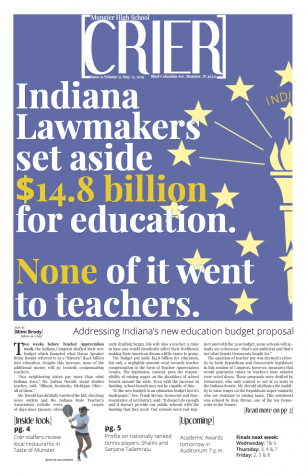NME critique service open for 2025
The Quill and Scroll News Media Evaluation provides news media staffs a one-of-a-kind assessment of your publication(s) with constructive comments and suggestions for improvement from qualified evaluators. Judges will provide a thorough analysis and rating to schools, and the evaluation exercise and feedback are instructive and developmental.
High schools and junior high/middle schools may enter their multimedia news operations, newspapers, news magazines and/or online news sites until June 13, 2025. Entries and ratings are returned mid September 2025. This service is open to non-member schools as well as member schools.
We offer four types of critiques for varying types of student news media.
- COMPREHENSIVE NEWS MULTIMEDIA. Do you have a newspaper or magazine, plus a website and social media? Submit multiple media for a full evaluation of your entire news and journalism programs. These critiques include extensive comments from your evaluator. (Fee is $150.)
- COMPREHENSIVE SINGLE NEWS MEDIUM. Submit a single medium (newspaper, news magazine or online news site) for a full evaluation. These critiques include extensive comments from your evaluator. (Fee is $100 per medium.)
- RATINGS-ONLY NEWS MULTIMEDIA.Submit your multimedia news operation for a ratings-only evaluation ($80). These critiques include no comments from your evaluator. (Fee is $80.)
- RATINGS-ONLY SINGLE NEWS MEDIUM.Submit a single medium (newspaper, news magazine or online news site) for a ratings-only evaluation. These critiques include no comments from your evaluator. (Fee is $50.)
We have five areas for evaluation. They are:
- General Practices
- Coverage
- Writing and Editing
- Visuals
- Digital — Social Media/Website (For Online-Only and Multimedia Evaluations)
Judges will attach a ranking in each area. Those rankings are:
- Superior
- Excellent
- Good
- Needs Improvement
Before submitting your critique
- Adviser(s) or student leaders should formulate a statement summarizing targeted areas of growth, as well as specific questions about the current year’s work.
- Provide information about the school, student staff and media outlet to give judges insight into factors affecting content and coverage.
- Seek critiques from different organizations to form multiple perspectives.
General Directions
The registration form is a Google Doc that you can find here. You’ll follow these simple instructions, which are on the form:
- Make a copy of the Google Doc.
- Rename your copy with your school and “NME 2025” (e.g. “City High NME 2023).
- Fill in the requested information on the front page and page 2, as well as the “General Information” and “Criterion One: General Practices” sections.
- Criteria Two through Five — Coverage, Writing and Editing, Visuals, and Digital Media — are optional if you’d like to provide your judge with even more information about your program.
- Download your completed form as a PDF.
- Send the PDF of the completed form to [email protected] before June 13, 2025.
- In the same email, if you have print publications that need to be evaluated, email PDFs of three separate issues to [email protected] (you choose the issues) or mail the physical issues by June 13, 2025 to the address below.
- Pay by credit card online or by check payable to Quill and Scroll, and mail to the address below.
News Media Evaluation, Quill and Scroll
7300 Metro Boulevard, Suite 131
Minneapolis, MN 55439
Awards in order of prestige:
- George H. Gallup Award
- This means that a publication has received a “Superior” rating overall in each of the four or five areas for evaluation. (Four areas for newspapers and news magazines. Five areas for online media and for comprehensive evaluations.)
- International First Place Award
- This means that a publication has received at least one “Superior” and at least one “Excellent” rating in the four or five areas for evaluation, with the other areas rated “Good.”
- International Second Place Award
- This means that a publication has received “Good” or better in the four or five areas for evaluation, but does not qualify for the higher awards.
- International Honor Award
- This means the publication has received at least one “Needs Improvement” rating in the four or five areas for evaluation.
AFTER RECEIVING A CRITIQUE
- Review and understand the feedback before sharing it widely with students. Determine which areas of a critique should be emphasized.
- Celebrate success.
- See criticism as an opportunity for growth and future success.
- Synthesize feedback from a variety of critiques from multiple organizations to establish strategies for improvement and growth; apply lessons learned to a wide spectrum of future work.
- Use evaluations as teaching tools; encourage students to use evaluation instruments for peer editing.
- Understand that critiques are not designed to be a qualitative measure of teacher performance but may be conversation starters with school administrators.
- Share feedback about the evaluation results and processes with contest administrators, but understand that evaluators/judges are colleagues or professionals giving their time and expertise with the best of intentions.
In addition to providing you and your students valuable insight as to how to improve your student publications, Quill and Scroll uses this critique service to fulfill its core missions, to “encourage, support and recognize individual student initiative and achievement in scholastic journalism, irregardless the medium.”
If you’re not already a charter school in Quill and Scroll, we invite you to consider starting a chapter. If you are a charter member, we welcome your input in the organization, and we look forward to inducting your students into the 99-year-old tradition that is Quill and Scroll.

